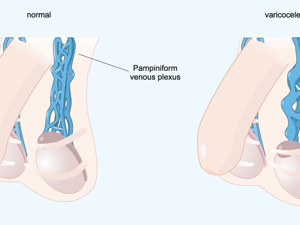2014年6月12日讯 /生物谷BIOON/ --最近来自ImStem生物技术公司、麻省大学健康中心以及Advanced Cell Technology公司的研究人员利用一种名为间充质干细胞(hES-MSCs)的人类胚胎干细胞成功治疗了患有多发性硬化症的小鼠。在这一研究中,科学家发现hES-MSCs比源自成人骨髓的同类干细胞(BM-MSCs)疗效更好,同时产生的IL-6细胞因子也更低(IL-6的分泌会加重病情)。间充质干细胞一般会分化为脂肪组织、骨组织等,具有广泛的生物医药前景。这一研究结果被发表在期刊Stem Cell Reports上。
多发性硬化症是一种神经炎症性疾病,目前还没有一种办法能够根治这一疾病。目前ImStem公司正在向医药管理部门申请临床一期研究许可。(生物谷Bioon.com)
详细英文报道:
Researchers from ImStem Biotechnology, University of Connecticut Health Center and Advanced Cell Technology ($ACTC) have successfully treated mice with multiple sclerosis using human embryonic stem cells derived from mesenchymal stem cells, known as hES-MSCs.
In their study, investigators found that hES-MSCs are more effective in treating multiple sclerosis in an animal model than mesenchymal stem cells from bone marrow of adult human donors, dubbed BM-MSCs.
Mesenchymal stem cells are traditionally found in the bone marrow, and their ability to differentiate into bone, cartilage and fat cells to support the formation of new blood and tissue make them an appealing potential treatment for a number of medical conditions.
Researchers observed that fluorescently labeled hES-MSCs--but not BM-MSCs--effectively penetrated the blood-brain barrier in mice and migrated into inflamed spinal cord. The findings show that the cells may be able to reduce neuroinflammation and promote nerve cell regeneration in multiple sclerosis.
"The beauty of the new hES-MSCs is their consistently high efficacy in MS model. This is a big surprise when we found that most BM-MSC lines show poor or no efficacy. Additionally, BM-MSCs but not hES-MSCs express high level of IL-6, a proinflammatory cytokine [that] can worsen the disease," said lead author Dr. Xiaofang Wang, chief technology officer of ImStem, in a statement.
There is no cure for multiple sclerosis, a neuroinflammatory disease that causes a wide range of physical and mental problems. Current therapies can be effective at relieving relapsing symptoms, but they are not designed to repair nerve cells that are damaged by demyelination. In MS, this process of demyelination destroys the myelin sheath, the insulating layer that protects nerve cell fibers called axons, which causes harm to brain and spinal cord cells. Axons help transmit signals to other neurons, and their injury results in a loss of movement, cognition and other functions.
The findings, which show a reduction in MS symptoms and prevention of neuronal demyelination in mice, are published in the June 5 online edition of Stem Cell Reports.
The Farmington, CT-based ImStem is now seeking approval for Phase I clinical trials using its hES-MSCs.
 39健康网
39健康网 肾虚的人长什么样2024-05-09
肾虚的人长什么样2024-05-09 前列腺炎患者应如何正确应对2024-05-09
前列腺炎患者应如何正确应对2024-05-09 阴囊潮湿什么药最好2024-05-09
阴囊潮湿什么药最好2024-05-09 龟头有红色疹子怎么回事2024-05-09
龟头有红色疹子怎么回事2024-05-09 男人精液黄怎么回事2024-05-09
男人精液黄怎么回事2024-05-09 尿路感染泡哪些茶喝好呢2024-05-09
尿路感染泡哪些茶喝好呢2024-05-09 正常形态精子2严重吗2024-05-09
正常形态精子2严重吗2024-05-09 男性六十多岁早上咳出血怎么回事2024-05-09
男性六十多岁早上咳出血怎么回事2024-05-09 男性胡子长得快,说明了什么?刮胡子频率高,寿命短?科学告诉你2024-05-09
男性胡子长得快,说明了什么?刮胡子频率高,寿命短?科学告诉你2024-05-09 老人一摔倒就骨折是咋回事?50岁后,3种营养要舍得补,强筋健骨2024-04-16
老人一摔倒就骨折是咋回事?50岁后,3种营养要舍得补,强筋健骨2024-04-16 男子肩痛半个月查出肺癌,医生提醒:4种肩痛可能是大病的信号2024-04-01
男子肩痛半个月查出肺癌,医生提醒:4种肩痛可能是大病的信号2024-04-01
 实话实说:经常做俯卧撑的人,3大好处不会太久到,男人可以试试2024-04-01
实话实说:经常做俯卧撑的人,3大好处不会太久到,男人可以试试2024-04-01 过性生活时,女人的幸福度,和男人的大小有关吗?男女都了解一下2024-01-03
过性生活时,女人的幸福度,和男人的大小有关吗?男女都了解一下2024-01-03 鼻毛“窜”出来的男人,有何不同?鼻毛变白暗示什么?看完涨知识2024-01-03
鼻毛“窜”出来的男人,有何不同?鼻毛变白暗示什么?看完涨知识2024-01-03
 自卑心理评估,测你内心真实的自卑程度心理测试
自卑心理评估,测你内心真实的自卑程度心理测试 测试你的性能力 ask4心理测试
测试你的性能力 ask4心理测试 抑郁症心理测试,测试一下自己吧!心理测试
抑郁症心理测试,测试一下自己吧!心理测试


